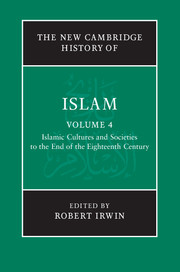Book contents
- Frontmatter
- Introduction
- PART I RELIGION AND LAW
- PART II SOCIETIES, POLITICS AND ECONOMICS
- 7 Legitimacy and political organisation: caliphs, kings and regimes
- 8 The city and the nomad
- 9 Rural life and economy until 1800
- 10 Demography and migration
- 11 The mechanisms of commerce
- 12 Women, gender and sexuality
- PART III LITERATURE
- PART IV LEARNING, ARTS AND CULTURE
- Glossary
- Bibliography
- Index
- References
9 - Rural life and economy until 1800
from PART II - SOCIETIES, POLITICS AND ECONOMICS
Published online by Cambridge University Press: 28 March 2011
- Frontmatter
- Introduction
- PART I RELIGION AND LAW
- PART II SOCIETIES, POLITICS AND ECONOMICS
- 7 Legitimacy and political organisation: caliphs, kings and regimes
- 8 The city and the nomad
- 9 Rural life and economy until 1800
- 10 Demography and migration
- 11 The mechanisms of commerce
- 12 Women, gender and sexuality
- PART III LITERATURE
- PART IV LEARNING, ARTS AND CULTURE
- Glossary
- Bibliography
- Index
- References
Summary
Diversity
The lives of sedentary people in the Islamic countryside unfolded in a multi-faceted context. Natural, technological, economic, political, cultural and religious factors all bore on rural life, and were in turn affected by it.
The natural world provided a backdrop of topography, soils, climate and water, while technologies offered tools, irrigation devices, plants, animals and rotations. Economic factors such as population densities, urbanisation, monetisation of the economy and long-distance trade further conditioned the activities of agriculturists, as did the policies of governments concerning security, land tenure, inheritance, water rights, taxation and the construction and maintenance of irrigation works. Cultural biases showed in preferences for different modes of settlement and production, as well as in diets, and both political and cultural elements were informed by religious teachings. None of these was a constant.
- Type
- Chapter
- Information
- The New Cambridge History of Islam , pp. 290 - 305Publisher: Cambridge University PressPrint publication year: 2010



